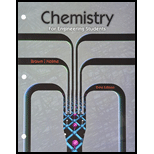
Interpretation:
The study has identified the obstacles to sustainable recovery and recycling of plastic solid waste which are technology, quality and demand, cost and capacity, market share and legislation and environmental concerns.
Concept Introduction:
The obstacles are slow upgrading of technology, limited number of machines, slow tooling sector, complicated mold design, bad trouble shooting in processing machine operations and requirement of variety of techniques.
There are also technical obstacles such as identification of sorting and collecting technology. The technical obstacles play major role in diminishing the recovery and recycling industries.
Answer to Problem 1CO
Solution:
The causes to obstacles in the recovery and recycling of plastic solid waste are analysed in terms of economic, environmental and social aspects of sustainability
Explanation of Solution
The causes to obstacles in the recovery and recycling of plastic solid waste in terms of economic, environmental and social aspects of sustainability are:
Economic aspects of sustainability include;
- Attractive export markets are at long distances.
- For recycled products there is relatively small local and regional markets.
- The level of export readiness is limited.
- The competition from imports is strong.
- The cost of input material is very high cost of input material.
- The cost of compliance is high.
- The cost of logistics is high.
- High labor cost.
- The capacity of collection is less.
- lack of producer responsibility.
- The research and development are limited.
- The technological upgrading has a slow pace.
- Manufacturing of limited machine.
- Weak tooling sector.
- Decrease in sorting facilities.
- Complexity in the mold design.
- Poor trouble shooting in operation of processing machine.
- Requirement of variety of techniques.
- The quality is determined by the price of the recycled material.
Scientific aspects of sustainability include:
- There is lack of certification to determine quality standards.
- There is lack of facilities required in quality testing.
- There is lack of plastic waste management in proper manner.
- There is lack of responsibility of the producer.
- Limited research and development.
- Low domestic demand for recycled products.
- The demand of high quality for recycled materials.
- Negative society image against the plastic industries.
The causes to obstacles in the recovery and recycling of plastic solid wastes are analysed in terms of in terms of economic, environmental and social aspects of sustainability.
Want to see more full solutions like this?
Chapter 10 Solutions
Bundle: Chemistry for Engineering Students, 3rd, Loose-Leaf + OWLv2 with Quick Prep and Student Solutions Manual 24-Months Printed Access Card
- Synthesize 2-Hydroxy-2-phenylacetonitrile from phenylmethanol using the necessary organic or inorganic reagents. Draw the structures of the compounds.arrow_forwardSynthesize N-Methylcyclohexylamine from cyclohexanol using the necessary organic or inorganic reagents. Draw the structures of the compounds.arrow_forwardSynthesize N-Methylcyclohexylamine from cyclohexanol using the necessary organic or inorganic reagents. Draw the structures of the compounds.arrow_forward
- If possible, please provide the formula of the compound 3,3-dimethylbut-2-enal.arrow_forwardSynthesize 1,4-dibromobenzene from acetanilide (N-phenylacetamide) using the necessary organic or inorganic reagents. Draw the structures of the compounds.arrow_forwardIndicate the products obtained by mixing (3-oxo-3-phenylpropyl)triphenylphosphonium bromide with sodium hydride.arrow_forward
- We mix N-ethyl-2-hexanamine with excess methyl iodide and followed by heating with aqueous Ag2O. Indicate the major products obtained.arrow_forwardIndicate the products obtained by mixing acetophenone with iodine and NaOH.arrow_forwardIndicate the products obtained by mixing 2-Propanone and ethyllithium and performing a subsequent acid hydrolysis.arrow_forward
- Indicate the products obtained if (E)-2-butenal and 3-oxo-butanenitrile are mixed with sodium ethoxide in ethanol.arrow_forwardQuestion 3 (4 points), Draw a full arrow-pushing mechanism for the following reaction Please draw all structures clearly. Note that this intramolecular cyclization is analogous to the mechanism for halohydrin formation. COH Br + HBr Brarrow_forwardIndicate the products obtained if 2,2-dimethylpropanal and acetaldehyde are mixed with sodium ethoxide in ethanol.arrow_forward
 Chemistry for Engineering StudentsChemistryISBN:9781337398909Author:Lawrence S. Brown, Tom HolmePublisher:Cengage Learning
Chemistry for Engineering StudentsChemistryISBN:9781337398909Author:Lawrence S. Brown, Tom HolmePublisher:Cengage Learning Chemistry: Matter and ChangeChemistryISBN:9780078746376Author:Dinah Zike, Laurel Dingrando, Nicholas Hainen, Cheryl WistromPublisher:Glencoe/McGraw-Hill School Pub Co
Chemistry: Matter and ChangeChemistryISBN:9780078746376Author:Dinah Zike, Laurel Dingrando, Nicholas Hainen, Cheryl WistromPublisher:Glencoe/McGraw-Hill School Pub Co World of ChemistryChemistryISBN:9780618562763Author:Steven S. ZumdahlPublisher:Houghton Mifflin College Div
World of ChemistryChemistryISBN:9780618562763Author:Steven S. ZumdahlPublisher:Houghton Mifflin College Div Principles of Modern ChemistryChemistryISBN:9781305079113Author:David W. Oxtoby, H. Pat Gillis, Laurie J. ButlerPublisher:Cengage Learning
Principles of Modern ChemistryChemistryISBN:9781305079113Author:David W. Oxtoby, H. Pat Gillis, Laurie J. ButlerPublisher:Cengage Learning ChemistryChemistryISBN:9781305957404Author:Steven S. Zumdahl, Susan A. Zumdahl, Donald J. DeCostePublisher:Cengage Learning
ChemistryChemistryISBN:9781305957404Author:Steven S. Zumdahl, Susan A. Zumdahl, Donald J. DeCostePublisher:Cengage Learning





